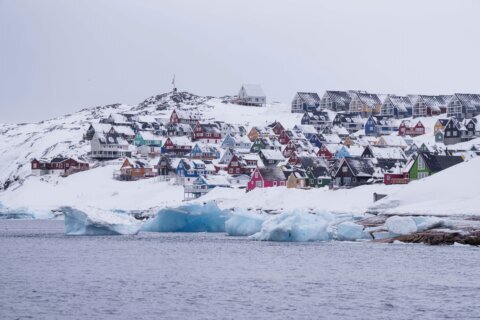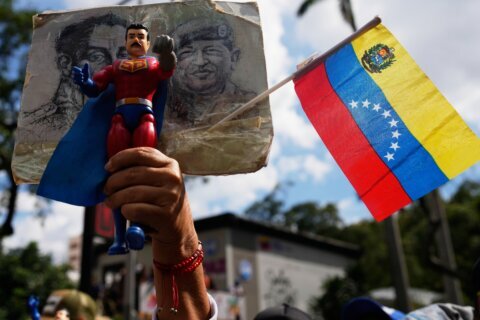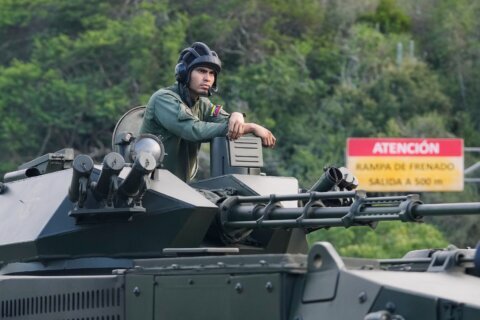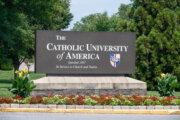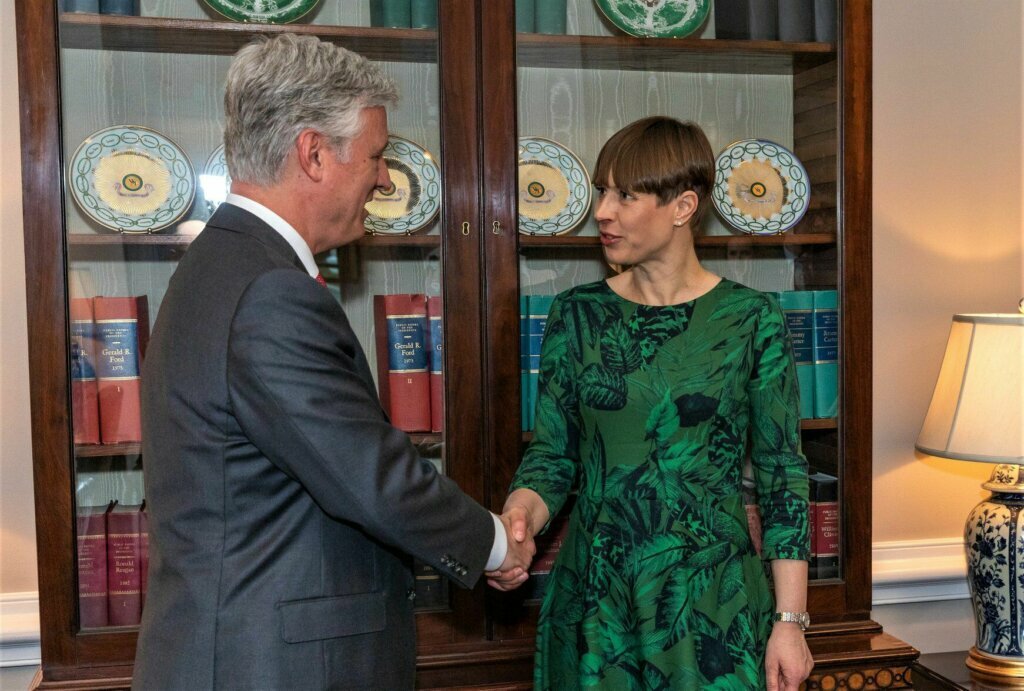
Intent on stepping out of the dilapidated ruins left behind by the USSR, countries in Central and Eastern Europe have each circled the globe for nearly 30 years looking for foreign investors to help them secure their futures.
Now, they’ve banded together and nailed down a multibillion-dollar deal that should do it.
A White House meeting last week confirmed the U.S. is all in.
On the afternoon of March 3, traffic was stopped at an intersection not far from D.C.’s Dupont Circle. One of the many diplomatic motorcades that blow through the city regularly just reached the end of its trip, lights and sirens fully engaged.
The convoy stopped in front of a four-story, cream-colored building at 2131 Massachusetts Ave. Northwest: the Embassy of Estonia.
The president of Estonia exited the main vehicle as U.S. Secret Service agents assumed their eagle-eyed positions, visually sweeping the triangle-shaped block for signs of trouble.
Once inside, President Kersti Kaljulaid, the first female leader of Estonia and only the fourth since it became an independent nation, and her staff set up a temporary command post in a large dining room that doubled as a conference room.
Ambassador Jonathan Vseviov, one of Estonia’s rising political stars, made sure all was flowing smoothly. They were preparing for her next stop: a critical meeting at the White House.
On the agenda was the Three Seas Initiative (3SI). The project, launched in 2015, is designed to facilitate interconnectivity through digitalization, energy and infrastructure projects in Central and Eastern Europe.
“The Three Seas initiative is a practical approach to fill the void in the countries that were formerly behind the Iron Curtain and are now a part of the European Union,” said Kaljulaid in an exclusive interview with WTOP.
Kaljulaid, 50, Estonia’s youngest-ever head of state, spoke with a smooth, assured cadence and demonstrated a commanding ability to verbally paint vivid pictures of critical issues.
“If for 50 years,” Kaljulaid said, “nothing gets invested, then it doesn’t look like it should. Three Seas is trying to build smart connectivity between these countries.”
The ‘geopolitical’ importance to the US
The project is named after the three seas that border a dozen countries’ region: the Baltic, Black, and Adriatic seas. The countries involved include Austria, Bulgaria, Croatia, the Czech Republic, Estonia, Hungary, Latvia, Lithuania, Poland, Romania, Slovakia and Slovenia.
Thousands of miles away, the U.S. is playing a critical role.
“I believe at the Munich Security Conference, it was broadcast the loudest possible how the U.S. is involved in the Three Seas Initiative. Secretary (Mike) Pompeo promised that the U.S. would invest up to $1 billion, provided that the Three Seas countries themselves also invested into the fund,” Kaljulaid said.
She met with national security adviser Robert O’Brien to discuss the matter. WTOP asked the National Security Council to characterize the meeting.
A senior administration official said, “Our commitment of $1 billion to the Three Seas Initiative was a powerful demonstration of the United States’ investment in strengthening Central Europe’s energy security and economic growth.”
Kaljulaid made it clear that the added stability 3SI delivers is not just important to the region. “It is of geopolitical interest to the United States to make sure that these (Three Seas) countries are really feeling that they do belong to Europe,” she said.
The senior U.S. administration official — pointing to a slate of meetings and appearances that Kaljulaid participated in that were designed to emphasize the importance of the Three Seas Initiative — said, “This past week’s meetings with President Kaljulaid served to further reinforce the U.S. support for this important effort ahead of the Summit in Tallinn this summer.”
By time the summit opens in June, it’s hoped that $3 billion to $5 billion will have been raised. The money for the project is not only coming from foreign investors.
“We want all Three Seas countries, as many as possible, either committed or invested,” Kaljulaid said.
That element of the project is critical, because as Kaljulaid pointed out, many of the 3SI countries are connected to the West, “but not among ourselves.”
Mutual assistance
During her White House visit, she also met separately with senior advisers Jared Kushner and Ivanka Trump about other matters.
Estonian officials don’t just visit the U.S. to seek assistance. The small country, the 132nd-largest country on the planet, is the world’s most technologically advanced nation. It’s also America’s most critical ally in Eastern Europe, and the U.S. state of Maryland’s “state partner.”
The U.S. and Estonia share a rich, cultural connection. From long-standing historical links to modern strategic military and geopolitical bonds, the two countries’ futures are intertwined.
Estonia was the victim of a vicious Russian cyberattack in 2007. Since then, Estonia has strategically worked its way from a Baltic pawn recovering from the Cold War to a global, digital powerhouse. It has plotted a bright economic future, insulated itself from Russia’s aggression and pioneered security measures that many nations, including the U.S., have benefited from.
Recognizing that strength often comes in numbers, Kaljulaid championed NATO for recognizing Russia’s revival of its aggressive tactics in the region and preparing for an “unpredictable Russia.”
Aware of the turmoil in U.S. politics, Kaljulaid said that Russia “paradoxically is also very predictable,” especially as the U.S. prepares for the 2020 election.
“To try to disrupt democratic processes is one of the approaches that Russia has been taking. The U.S. has said it. France has said it. We have absolutely no reason to not suspect that it will happen in upcoming elections,” Kaljulaid said.


